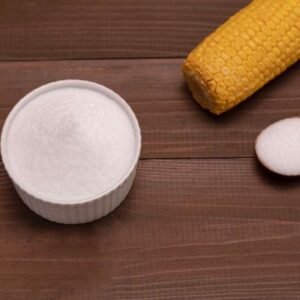
Shedding New Light on Depression with this “Sunlight” Hack
You’ve likely heard of Seasonal Affective Disorder (SAD).
This form of the blues hits as the leaves fall and the days grow shorter.
Well, new research reveals that the same therapy that helps many folks battling SAD feel better could be a ray of hope for those fighting other types of depression, too.
Here’s what we know…
When the days get shorter and grayer, some folks’ internal clocks go haywire, resulting in seasonal depression.
With SAD, you’re hit with classic depression symptoms plus some extras, including increased appetite, weight gain, and excessive sleepiness. It’s like your body is sending you a message that it’s time to hibernate, but modern living blocks the memo.
However, light therapy, or phototherapy, can mimic the natural sunlight we miss during fall and winter.
You simply sit near a sunlight-simulating light box for at least 30 minutes in the morning to do it. The bright light helps correct your circadian rhythm, triggering your brain to produce more serotonin and less melatonin, improving mood and reducing other SAD symptoms.
Well, it turns out this same simple treatment could also be a game-changer for folks suffering from other forms of depression.
You see, light plays a crucial role in regulating our mood and energy levels year-round. In fact, light therapy appears to work for seasonal and nonseasonal depression nearly as well as antidepressants or cognitive behavioral therapy.
The results vary from study to study, but it’s estimated that between 40 and 60 percent of depressed people find significant relief when they increase their light exposure.
For example, a study published in Epidemiology and Psychiatric Sciences confirmed it could be groundbreaking for those battling major depression and perinatal depression (depression during or after pregnancy).
But before you rush out to buy the biggest, brightest lamp you can find, remember the best light comes from the sun itself.
Studies show that most of us spend 90 percent of our days indoors. So, simply spending more time outdoors can help beat back depression of all sorts.
However, during the winter months, using a light box makes sense for many folks, especially those living in snowy northern climates.
So, the next time you’re feeling down in the dumps, whether it’s the dead of winter or the height of summer, remember that the solution could be as simple as letting a little more light into your life.
P.S. Shedding some light on ANOTHER hidden depression trigger.
Source:
Virtanen, S. Törmälehto, T. Partonen, M. Elovainio, R. Ruuhela, C. Hakulinen, K. Komulainen, J. Airaksinen, A. Väänänen, A. Koskinen, R. Sund. Seasonal patterns of sickness absence due to diagnosed mental disorders: a nationwide 12-year register linkage study. Epidemiology and Psychiatric Sciences, 2023; 32 DOI: 10.1017/S2045796023000768
Written By Dr. Scott Olson, ND
Nearly 25 years ago, failed mainstream medical treatments left Dr. Olson in constant pain – and his health in ruins. And that’s when he did something REVOLUTIONARY. He began his career in medicine – and dedicated his life to uncovering the true, underlying causes of disease.
Through his innovative medical practices in Tennessee and Colorado, Dr. Olson has helped cure countless seniors from across America of arthritis… heart disease… diabetes… and even cancer. All without risky prescription drugs or painful surgeries.
View More Free Articles
A New Reason to Ditch Processed Junk
If you’ve ever walked the inside aisles of your local grocery store and thought, “This is all just junk,” your instincts were spot on. A new study published in the journal Thorax just added another red flag to the list of dangers linked to ultra-processed food—a 41 percent higher risk of lung cancer. That’s right....
When Being Winded on Stairs Is Serious (And When It Isn’t)
I had an athlete visit me recently because he experienced shortness of breath while climbing stairs. He is in great shape, so he was worried about what it might mean. “Doc,” he said, “I run five miles three times a week. Why am I huffing and puffing after two flights of stairs?” His concern is...
Study EXPOSES Hidden Danger Lurking in Your Car
We think of our homes and cars as safe havens. But according to a startling new study, they may be flooding your lungs with microscopic plastic particles—every single day. Researchers in France recently found that adults inhale an average of 68,000 microplastic particles daily from indoor air alone. To put that in perspective, that’s about...
Mailbag: Is Modern Food Making You Snore?
“What can cause snoring, and is there a way to correct this issue?” —Seeking Silence Hi Seeking, Snoring happens when the soft tissues in your throat relax and vibrate as air passes through during sleep. While several factors can cause snoring—from sleep position to nasal congestion—I want to share one trigger that might surprise you....
Simple Food Swap SLASHES Dementia Risk 28%
Let’s be honest… who would jump at the chance to cut their dementia risk by 28 percent. And no, you don’t need to run marathons, survive on broccoli, or learn to play the zither (whatever that is) to make it happen. All it takes is one easy swap—something that’s probably already in your refrigerator. Researchers...
This SMART Floss Exposes Hidden Health Danger
Scientists have created dental floss that doesn’t just clean between your teeth—it also tracks your stress while you’re flossing. Now, I know what you’re thinking… “Great—now even flossing is going to stress me out by telling me how stressed I am.” But this fascinating new tool from Tufts University could be a game-changer for understanding...
Is This "Safe" Sweetener Damaging Your Brain?
The headlines are alarming… “Popular Sugar Substitute Linked to Brain Cell Damage” and “Erythritol Could Damage Critical Brain Barrier” are just two of the dozens I’ve spotted recently. But before you toss every sugar-free product in your pantry, let’s take a closer look at what this study actually shows—and what it doesn’t. The latest research...
This Summer Threat Could SPIKE Your Blood Sugar
Picture this… It’s another scorching hot summer day. You crank up the air conditioning while watching the weather forecast, which predicts yet another “record-breaking” heat wave. It’s starting to feel like just another miserably uncomfortable summer. But what you might not realize is that—if you have diabetes—those rising temps could do far more damage to...
Move Over Yogurt—5 Foods That Pack MORE Probiotics
Let’s talk about your gut. The microbiome is the collection of trillions of bacteria and other tiny organisms that live in and on your body—especially in your gut—and help keep you healthy. I’ve written often about how vital it is to maintain a healthy microbiome. And you might have dutifully added yogurt to your shopping...
Is Your Heart Older Than YOU?
Maybe you feel young for your age. Good energy, decent sleep, eating your veggies. But what if I told you your heart might be a decade older than the rest of you? That’s exactly what researchers at Northwestern University found in a new study published in JAMA Cardiology. The average American woman’s heart is about...









